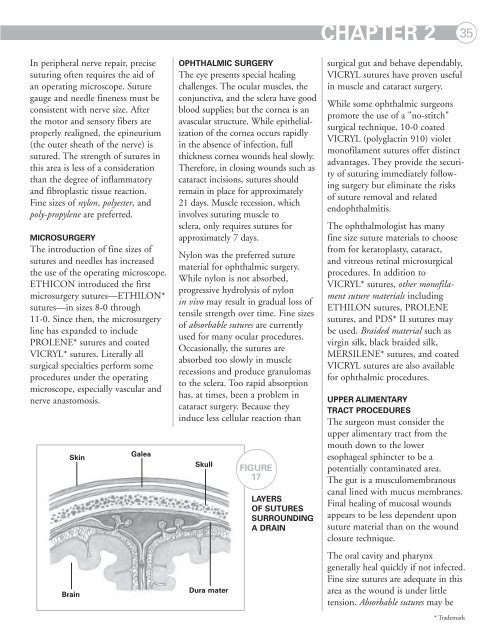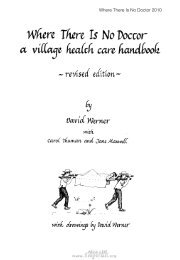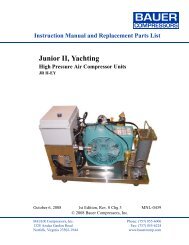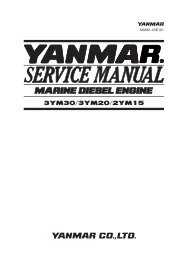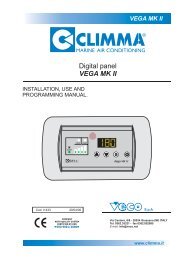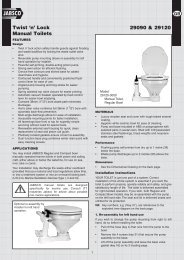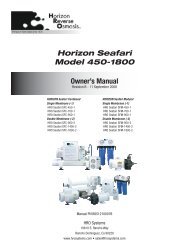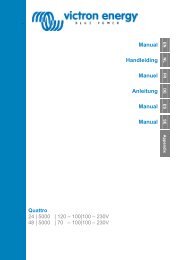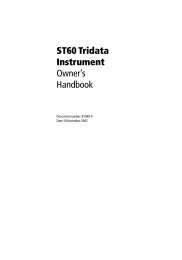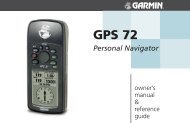Wound Closure Manual (PDF) - Penn Medicine
Wound Closure Manual (PDF) - Penn Medicine
Wound Closure Manual (PDF) - Penn Medicine
Create successful ePaper yourself
Turn your PDF publications into a flip-book with our unique Google optimized e-Paper software.
In peripheral nerve repair, precise<br />
suturing often requires the aid of<br />
an operating microscope. Suture<br />
gauge and needle fineness must be<br />
consistent with nerve size. After<br />
the motor and sensory fibers are<br />
properly realigned, the epineurium<br />
(the outer sheath of the nerve) is<br />
sutured. The strength of sutures in<br />
this area is less of a consideration<br />
than the degree of inflammatory<br />
and fibroplastic tissue reaction.<br />
Fine sizes of nylon, polyester, and<br />
poly-propylene are preferred.<br />
MICROSURGERY<br />
The introduction of fine sizes of<br />
sutures and needles has increased<br />
the use of the operating microscope.<br />
ETHICON introduced the first<br />
microsurgery sutures—ETHILON*<br />
sutures—in sizes 8-0 through<br />
11-0. Since then, the microsurgery<br />
line has expanded to include<br />
PROLENE* sutures and coated<br />
VICRYL* sutures. Literally all<br />
surgical specialties perform some<br />
procedures under the operating<br />
microscope, especially vascular and<br />
nerve anastomosis.<br />
Skin<br />
Brain<br />
Galea<br />
OPHTHALMIC SURGERY<br />
The eye presents special healing<br />
challenges. The ocular muscles, the<br />
conjunctiva, and the sclera have good<br />
blood supplies; but the cornea is an<br />
avascular structure. While epithelialization<br />
of the cornea occurs rapidly<br />
in the absence of infection, full<br />
thickness cornea wounds heal slowly.<br />
Therefore, in closing wounds such as<br />
cataract incisions, sutures should<br />
remain in place for approximately<br />
21 days. Muscle recession, which<br />
involves suturing muscle to<br />
sclera, only requires sutures for<br />
approximately 7 days.<br />
Nylon was the preferred suture<br />
material for ophthalmic surgery.<br />
While nylon is not absorbed,<br />
progressive hydrolysis of nylon<br />
in vivo may result in gradual loss of<br />
tensile strength over time. Fine sizes<br />
of absorbable sutures are currently<br />
used for many ocular procedures.<br />
Occasionally, the sutures are<br />
absorbed too slowly in muscle<br />
recessions and produce granulomas<br />
to the sclera. Too rapid absorption<br />
has, at times, been a problem in<br />
cataract surgery. Because they<br />
induce less cellular reaction than<br />
Skull<br />
Dura mater<br />
FIGURE<br />
17<br />
LAYERS<br />
OF SUTURES<br />
SURROUNDING<br />
A DRAIN<br />
CHAPTER 2 35<br />
surgical gut and behave dependably,<br />
VICRYL sutures have proven useful<br />
in muscle and cataract surgery.<br />
While some ophthalmic surgeons<br />
promote the use of a "no-stitch"<br />
surgical technique, 10-0 coated<br />
VICRYL (polyglactin 910) violet<br />
monofilament sutures offer distinct<br />
advantages. They provide the security<br />
of suturing immediately following<br />
surgery but eliminate the risks<br />
of suture removal and related<br />
endophthalmitis.<br />
The ophthalmologist has many<br />
fine size suture materials to choose<br />
from for keratoplasty, cataract,<br />
and vitreous retinal microsurgical<br />
procedures. In addition to<br />
VICRYL* sutures, other monofilament<br />
suture materials including<br />
ETHILON sutures, PROLENE<br />
sutures, and PDS* II sutures may<br />
be used. Braided material such as<br />
virgin silk, black braided silk,<br />
MERSILENE* sutures, and coated<br />
VICRYL sutures are also available<br />
for ophthalmic procedures.<br />
UPPER ALIMENTARY<br />
TRACT PROCEDURES<br />
The surgeon must consider the<br />
upper alimentary tract from the<br />
mouth down to the lower<br />
esophageal sphincter to be a<br />
potentially contaminated area.<br />
The gut is a musculomembranous<br />
canal lined with mucus membranes.<br />
Final healing of mucosal wounds<br />
appears to be less dependent upon<br />
suture material than on the wound<br />
closure technique.<br />
The oral cavity and pharynx<br />
generally heal quickly if not infected.<br />
Fine size sutures are adequate in this<br />
area as the wound is under little<br />
tension. Absorbable sutures may be<br />
* Trademark


